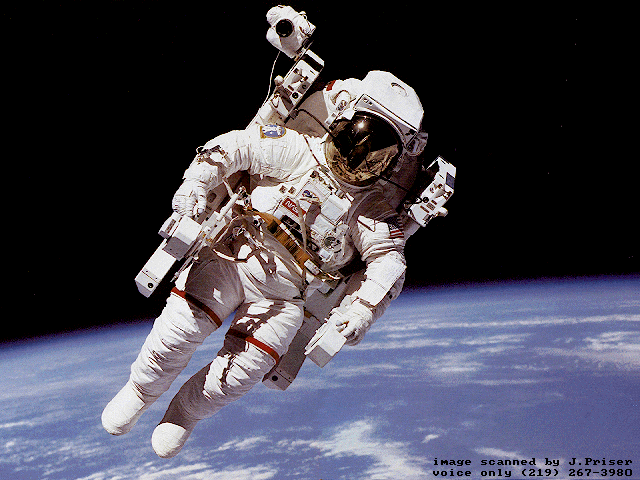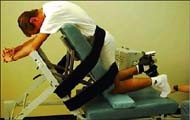Bones In Space
It has been observed over many missions into space that the bone density of
astronauts decreases, causing an osteoporosis like condition. This loss is around
one to two per cent of the astronauts bone mass in a month, which in eight months
is equivalent to the average bone mass lost by someone on earth, in a ten year
period between the ages of 50 and 60. It is therefore quite a significant problem,
especially if trips into space are to get longer.
 The
cause of this is of course the complete lack of gravity present in space. It
has been shown, using calcium carbonate (which behaves similarly to the main
component of hydroxyapatite) that crystallisation of the component is altered
by the reduction in gravity.
The
cause of this is of course the complete lack of gravity present in space. It
has been shown, using calcium carbonate (which behaves similarly to the main
component of hydroxyapatite) that crystallisation of the component is altered
by the reduction in gravity.
A substance will crystallise out of a liquid when it's concentration in that
liquid reaches a certain level. This is what happens to hydroxyapatite in the
solution which surrounds the osteoblast cells. The process in which the particles
of the dissolved solid matter find each other and stick together to from bigger
particles is called nucleation, which can occur in one of two ways. Heterogeneous
nucleation where the particles stick to a foreign surface. This acts as a seed
on which larger crystals can grow. Heteronucleation is the easiest form and
is the process that occurs in bones on earth. The hydroxyapatite molecules stick
to the surface of the collagen molecules.
 |
|
Exercising in space to reduce muscle
wasting and loss of bone density.
|
In space however there is a problem. The lack of gravity causes the convection
currents in the solution surrounding the collagen to cease. The regions of the
solution that are low in hydroxyapatite solution and therefore less dense, now
have exactly the same weight as the the areas of high concentration. A constant
supply of highly concentrated solution to the surface of the collagen is no
longer achieved and hydroxyapatite crystallises out homogeneously or by itself,
away from the collagen. The is the cause of porous and brittle bones.
Luckily headway is being made into a suitable treatments, that will not only
be useful for people in space, but to those who prefer to keep two legs on the
ground but also suffer from osteoporosis.
 The
cause of this is of course the complete lack of gravity present in space. It
has been shown, using calcium carbonate (which behaves similarly to the main
component of hydroxyapatite) that crystallisation of the component is altered
by the reduction in gravity.
The
cause of this is of course the complete lack of gravity present in space. It
has been shown, using calcium carbonate (which behaves similarly to the main
component of hydroxyapatite) that crystallisation of the component is altered
by the reduction in gravity. 